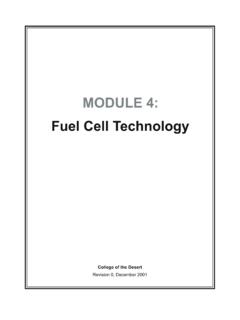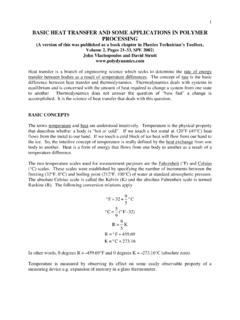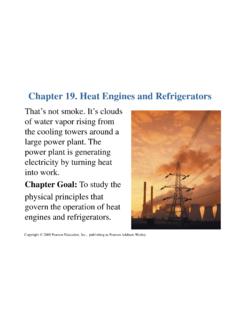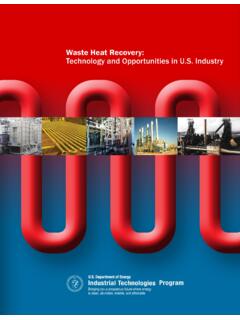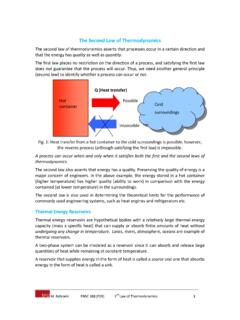Search results with tag "Heat engines"
Chapter 19. Heat Engines and Refrigerators
physics.gsu.eduHeat Engines • A heat engine is any closed-cycle device that extracts heat from a hot reservoir, does useful work, and exhausts heat to a cold reservoir. • A closed-cycle device is one that periodically returns to its initial conditions, repeating the same process over
Hydrogen Fuel - Energy
www1.eere.energy.govHeat engines, such as internal combustion engines and turbines, convert chemical en-ergy into heat by way of combustion and use that heat to do useful work. The optimum (or “Carnot”) thermody-namic efficiency of a heat engine is known to be:
BASIC HEAT TRANSFER AND SOME APPLICATIONS IN …
www.polydynamics.comThe efficiency of heat engines is higher if the heat source has higher temperature. However, all such actual devices have low efficiencies (e.g. combustion engines for cars, no more than 35%). In other words, only about 1/3 of the energy in gasoline goes to useful work (motion of the car). The rest is wasted due to thermodynamic implications.
Chapter 19. Heat Engines and Refrigerators
www.physics.gsu.eduTurning Heat into Work •Thermodynamics is the branch of physics that studies the transformation of energy. •Many practical devices are designed to transform energy from one form, such as the heat from burning fuel, into another, such as work. •Chapters 17 and 18 established two laws of thermodynamics
Helmholtz free energy - NCKU
www.che.ncku.edu.twThermodynamics Classical · ... Heat engines · Heat pumps Thermal efficiency ... the letter A as well as the use of name Helmholtz energy.[1] In physics, the letter F is usually used to denote the Helmholtz energy, which is often referred to as the Helmholtz function or simply “free energy."
Waste Heat Recovery - Energy
www1.eere.energy.govFigure 2 Variation of Carnot Efficiency of Heat Engines as a Function of ∆T 9 Figure 3 Abandoned Recuperator from an Aluminum Melting Furnace 11 Figure 4 (A) Metallic Radiation Recuperator Design (B) Radiation Recuperator Installed At Glass Melter 13 Figure 5 (A) Convection Recuperator (B) Combined Radiation/Convection ...
Physical Chemistry, 4th Edition
ndl.ethernet.edu.etThe second law of thermodynamics deals with the natural direction of processes and the question of whether a given chemical reaction can occur by itself. The second law was formulated initially in terms of the efficiencies of heat engines, but it also leads to the definition of entropy, which is important
ENGINE & WORKING PRINCIPLES
hillagric.ac.inA heat engine is a machine, which converts heat energy into mechanical energy. The combustion of fuel such as coal, petrol, diesel generates heat. This heat is supplied to a working substance at high temperature. By the expansion of this substance in suitable machines, heat energy is converted into useful work.
Second Law of Thermodynamics
www.sfu.caThe thermal efficiency of the heat engine increases as the heat source temperature TH is increased. TH K ηth % 1000 70 900 66.6 500 40 350 14.3 The thermal efficiency of actual heat engine can be maximized by supplying heat to the engine at the highest possible temperature (limited by material strength) and rejecting

